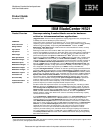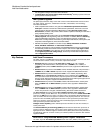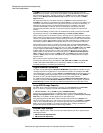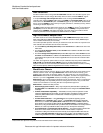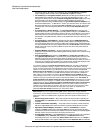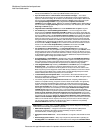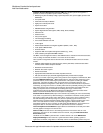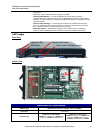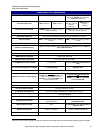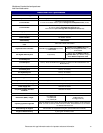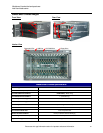
Workhorse 2-socket dual and quad-core
Intel Xeon blade server
Please see the Legal Information section for important notices and information.
6.
Disk Controllers
All HS21 models include an integrated LSI 1064E SAS controller. This controller supports up to
two internal SAS LVD (low-voltage differential) drives and offers hardware RAID-0/1 support.
If an optional Storage and I/O Expansion Unit is used, the integrated ServeRAID-8k-l
controller offers hardware RAID-0/1/1E support and 32MB of fast PC2-4200 DDR2 cache for the
internal drives. A ServeRAID-8k option adds RAID-5 support for up to five direct-attached SAS
drives, along with 256MB of cache memory for higher performance, and battery backup, without
consuming a valuable adapter slot.
The SAS controller provides data transfer speeds of up to 300MB per second
3
in each direction
(full-duplex) across the SAS bus, for an aggregate speed of 600MBps, nearly double that of
Ultra320 SCSI’s 320MBps (half-duplex) bandwidth. The serial design of the SAS bus allows
maximum performance to be maintained as additional drives are added.
High-Performance Adapter Slots
The HS21 blade server includes one x8 PCI-E and one 133MHz PCI-X adapter slot on each
blade. Either one legacy PCI-X expansion card or one SFF (small form factor) PCI-E adapter
can be installed in this blade (one card total).
One of three possible expansion units may be added to increase the number of expansion card
slots available. Each will utilize the PCI-E slot in the HS21:
• The 30mm Memory and I/O Expansion Unit provides one PCI-X slot in addition to the one on the
HS21 blade.
• The 30mm PCI I/O Expansion Unit II provides two PCI-X slots in addition to the one on the HS21
blade (3 PCI-X slots usable).
• The 30mm Storage and I/O Expansion Unit provides two adapter slots: either two PCI-X cards or
one PCI-X and one PCI-E slot in addition to the one PCI-X slot on the HS21 blade. (The first PCI-X
card installed in the expansion unit must be a Gigabit Ethernet card, because it is routed to module
bays 1 and 2.)
The HS21 also supports an optional feature card (in a dedicated slot) that provides concurrent
KVM (cKVM) and concurrent media (cMedia) access by multiple administrators at once.
Adapters can also be used to add interfaces to BladeCenter communication modules, including
Fibre Channel, Myrinet, additional Gigabit Ethernet modules, InfiniBand, etc.
BladeCenter Chassis
IBM offers three choices of chassis in which to use the HS21 blade server. Each chassis serves
different customer needs. The original BladeCenter chassis offers maximum density, great
flexibility and a wide variety of expansion options at an entry-level price. The next-generation
BladeCenter H chassis offers all of BladeCenter’s capabilities, and adds new high-performance
features. If you need a ruggedized chassis (for example, government/ military or telcos),
BladeCenter T offers special features optimized for those environments. There is a high degree
of interchangeability and compatibility of features among the three chassis. Any or all of these
chassis can be installed in a rack along with other rack-optimized equipment.
BladeCenter is a 7U chassis that provides:
• Reduced single points of failure — Many major components (either standard or optionally) are
hot-swappable and/or redundant. Servers and modules can be configured for automatic failover
to backups.
• Forward and backward compatibility — Most blades, and every switch and passthru module
released for IBM BladeCenter since 2002, are supported. Many new blades and fabric switches
released by IBM for BladeCenter H or BladeCenter T will also be supported in the original
BladeCenter chassis.
• Fourteen 30mm blade slots — These hot-swap slots are capable of supporting up to 14
HS20/HS21 (Xeon), LS20/LS21 (AMD
®
Opteron
®
), and JS20/JS21 (IBM PowerPC 970FX/MP)
blade servers, or 7 double-wide (60mm) HS40 or LS41 blade servers or a mixture of 30mm and
60mm blades. It also supports multiple optional 30mm Expansion Units in combination with the
blade servers, using the same blade slots. Up to six chassis can be installed in an industry-standard
42U rack, for a total of up to 84 30mm blade servers per rack, with full power redundancy.
• Four module slots for communication and I/O switches — The modules interface with all of the
blade servers in the chassis and eliminate the need for external switches or expensive,
cumbersome cabling. All connections are done internally via the midplane. Two module slots are
reserved for hot-swap/redundant Gigabit Ethernet switch modules. The other two bays support
additional Gigabit Ethernet modules, or Fibre Channel, InfiniBand, and other switch modules or
3
Data transfer rates depend on many factors and are often less than the maximum possible.



